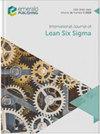虚拟现实支持精益教育培训:以能力为导向的教学环境的概念化、设计和评估
IF 3.7
2区 工程技术
Q2 ENGINEERING, INDUSTRIAL
引用次数: 2
摘要
该方法的目的是构建和促进以能力为导向的虚拟培训场景的开发。这种方法应该有助于开发可重复的结果。设计/方法论/方法本出版物提出了一个结构化的、以能力为导向的虚拟教学环境设计程序。该过程以Tisch的学习型工厂能力导向设计为基础,共分为三个阶段和不同的子步骤。通过应用实例介绍了该方法的不同步骤,并根据Glass对其教学能力的适用性进行了能力测量,对生成的场景进行了评估。除了介绍该方法的应用示例外,本出版物还介绍了该研究项目的具体结果。除了回顾虚拟现实(VR)在继续教育中的机会和局限性之外,这些还涉及使用VR的可能的,可实现的要求。此外,本文还介绍了在价值流映射培训的背景下,VR学习环境对能力发展的适用性。原创性/价值这种方法代表了精益主题的物理学习工厂培训设计的现有概念的实质性扩展。它可以帮助学习工厂操作员和其他培训提供者设计以能力和用户为导向的虚拟培训。在这种情况下,VR提供了许多潜力,但这些潜力只能通过认真使用这项技术来开发。本文章由计算机程序翻译,如有差异,请以英文原文为准。
Virtual reality supported trainings for lean education: conceptualization, design and evaluation of competency-oriented teaching-learning environments
Purpose
The purpose of this approach is to structure and facilitate the development of competency-oriented virtual training scenarios. This approach should help to develop reproducible results.
Design/methodology/approach
This publication presents a procedure for the structured, competency-oriented design of virtual teaching–learning environments. The procedure is based on the competency-oriented design of learning factories according to Tisch and consists of a total of three phases with various substeps. The different steps of the method are presented by means of an application example and the generated scenario is evaluated by means of a competency measurement according to Glass regarding its suitability for teaching competencies.
Findings
In addition to an application example that introduces the approach, this publication presents concrete results from the research project. In addition to a review of the opportunities and limitations of virtual reality (VR) in continuing education, these also refer to possible, realizable requirements for the use of VR. In addition, results on the suitability of VR learning environments for competency development in the context of value streaming mapping training are presented.
Originality/value
This approach represents a substantial extension of existing concepts for the design of physical learning factory training for lean topics. It can help learning factory operators and other training providers to design competency- and user-oriented virtual training. VR offers a multitude of potentials in this context, but these can only be exploited through conscientious use of the technology.
求助全文
通过发布文献求助,成功后即可免费获取论文全文。
去求助
来源期刊

International Journal of Lean Six Sigma
Engineering-Industrial and Manufacturing Engineering
CiteScore
8.90
自引率
15.00%
发文量
46
期刊介绍:
Launched in 2010, International Journal of Lean Six Sigma publishes original, empirical and review papers, case studies and theoretical frameworks or models related to Lean and Six Sigma methodologies. High quality submissions are sought from academics, researchers, practitioners and leading management consultants from around the world. Research, case studies and examples can be cited from manufacturing, service and public sectors. This includes manufacturing, health, financial services, local government, education, professional services, IT Services, transport, etc.
 求助内容:
求助内容: 应助结果提醒方式:
应助结果提醒方式:


